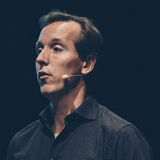Summary
Bill begins by recounting his experience at Netflix, where he led multiple simultaneous experiments and learned that 95% of UI code was thrown away, which shifted his mindset to designing for throw-away ability and viewing the UI layer as an experimentation layer. At PayPal, he confronted legacy technology stacks and a resistant culture, but with top-down support, he initiated cultural and technological transformations focused on rapid, user-centered iteration. Bill highlights the power of co-locating engineers, designers, and product folks to maintain weekly user studies and iterate checkout experiences, significantly improving customer satisfaction and business results. He introduces the concept of shearing layers in software stacks to separate stable, secure core layers from volatile experimentation layers, allowing calculated risk-taking. Bill stresses the need to shift organizational culture from delivery-centric to learning-centric, enabling teams to be empowered with continuous customer feedback and collaboration. He discusses democratizing engineering by leveraging internal open source (GitHub) and creating KrakenJS, an open-sourced Node.js framework, which increased developer engagement and reduced onboarding overhead. Bill critiques Agile’s lack of strategic direction and describes how integrating lean UX practices alongside Agile gives it a “brain” by grounding backlogs in real customer problems. He concludes with three essential lessons: achieve shared understanding via a common vocabulary, foster deep collaboration across disciplines, and maintain continuous customer feedback to keep teams aligned with user needs. Throughout, Bill emphasizes embracing failure as incremental learning and the importance of engineering infrastructures designed expressly for learning and change.
Key Insights
-
•
Netflix’s experimentation approach led to discarding around 95% of UI code annually, requiring design for throw-away ability.
-
•
Engineering’s highest value is enabling learning, not just building durable systems.
-
•
At PayPal, slow legacy stacks forced months-long changes that impeded innovation and led to cultural resistance.
-
•
Introducing shearing layers in software stacks helps separate stable secure components from volatile experimental layers.
-
•
Rapid user testing with co-located teams catalyzes accelerated learning and better product outcomes.
-
•
Democratizing innovation through internal open source practices like GitHub and KrakenJS enabled wider participation and faster adoption.
-
•
Agile alone lacks strategic direction; combining it with lean UX grounds backlog creation in real user problems.
-
•
Smaller, autonomous 'two-pizza' sized teams promote faster, higher-quality development than large monolithic teams.
-
•
Continuous customer feedback and embedding user context within teams prevents disconnected, misguided solutions.
-
•
Failure should be incremental and small to enable learning and avoid costly big mistakes.
Notable Quotes
"I started thinking of the UI layer as the experimentation layer."
"Engineering’s number one goal should be to enable learning."
"Organizations contain antibodies — people who resist change but often have good intentions."
"We locked ourselves away for 12 to 18 weeks with customers every week — the rhythm was incredibly powerful."
"Most organizations have a culture of delivery, but they need to move to a culture of learning."
"Great teams, if given enough context, will do smart things."
"We democratize the code base internally to create an intersourcing model, like open source inside the company."
"Agile needs a brain — without user context, it’s just a machine cranking out code."
"Failure is inevitable, but failing in small increments is the key difference."
"Continuous customer feedback soaks your teams with the context of the customer and problem set."
Or choose a question:
















More Videos

"You need strong regional players with negotiation skills to navigate the split loyalties in global teams."
Adam Cutler Karen Pascoe Ian Swinson Susan WorthmanDiscussion
June 8, 2016

"Playing politics in UX leadership is about maximizing relationships ethically to advance your agenda, not about being underhanded."
Peter MerholzThe Trials and Tribulations of Directors of UX (Videoconference)
July 13, 2023

"Human biases are the real problem behind algorithmic bias, not the algorithms themselves."
Lisa WelchmanCleaning Up Our Mess: Digital Governance for Designers
June 14, 2018

"We need to rethink how our cities are designed and function."
Vincent BrathwaiteOpener: Past, Present, and Future—Closing the Racial Divide in Design Teams
October 22, 2020

"If you get a perfect score on your OKRs, it means you didn’t set your sights high enough."
Brenna FallonLearning Over Outcomes
October 24, 2019

"Thick data is the opposite of big data; it’s stories, qualitative, and crucial during moments of rapid change."
Tricia WangSpatial Collapse: Designing for Emergent Culture
January 8, 2024

"Creating hypotheses from pain points with measurable success criteria helped prioritize which to pursue."
Edgar Anzaldua MorenoUsing Research to Determine Unique Value Proposition
March 11, 2021
"Our brains are terrible at operating only on one type of information, whether object-oriented or context-oriented."
Designing Systems at Scale
November 7, 2018

"A lot of developers are way too confident they write perfect code; testing bug fixes often reveals hidden issues."
Erin WeigelGet Your Whole Team Testing to Design for Impact
July 24, 2024
















